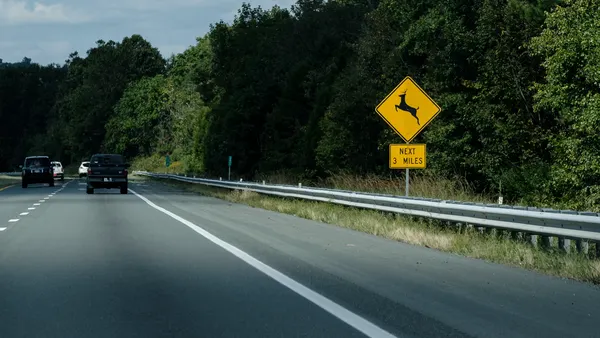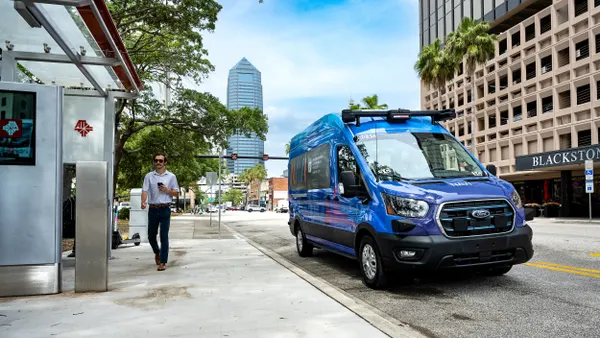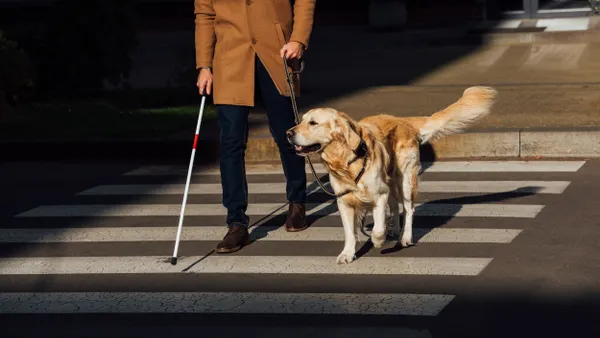Dive Brief:
- Detroit is embarking on a $1 million project that will cut two lanes of the seven-lane East Jefferson Avenue thoroughfare.
- The avenue was notoriously difficult for residents to cross; the redesign will shorten the distance across the lanes. The project will also prioritize safety and add better infrastructure for pedestrians and transit riders, including marked bus stops, pedestrian crossings, lower speed limit signs and bollards.
- Some residents complain the redesign will clog the busy roadway, which is the main artery from downtown to Eastern suburbs and already sees 20,000 vehicles a day on some stretches.
Dive Insight:
The East Jefferson redesign is being done with an eye on safety. Detroit public works director Ron Brundidge told Crain’s Detroit Business that there were more than 770 accidents along the street in the past five years, six of them fatal. The hope is that reducing the number of lanes will cut down on traffic and force drivers to lower their speeds.
The "road diet" approach has been successful in other cities striving to reduce traffic fatalities as part of Vision Zero plans; Orlando cut lanes from Edgewater Drive two decades ago and reduced vehicle collisions 40% and is now experimenting with temporary lane reductions. Los Angeles has likewise proposed reducing lanes on several roads, although recently backed off plans to impose a road diet on Temple Street because of negative public reaction. Los Angeles has announced plans to reduce speed limits on 45 streets as part of its Vision Zero plan, building on work done in Portland and other Vision Zero cities to slow traffic.
Detroit has stepped up in recent years to expand beyond its car-centric culture and make things safer for non-drivers (the city had the highest annual pedestrian fatality rate, according to National Highway Traffic and Safety Administration data). Last fall, Mayor Mike Duggan announced plans to invest $125 million in bonds for road and sidewalk repair, making business districts more pedestrian friendly. The city is also working on a proposed 20-year, $5.4 billion plan to expand bus service throughout the county.
Detroit is not one of the cities in the Vision Zero network, which have concrete fatality reduction plans in place and supported by public departments. Other cities in the network, including Washington, DC or Seattle, have embraced data, sensors and video analytics to identify problem spots on their roadways and create action plans to redesign streets, as well as integrating connected vehicle technology.









